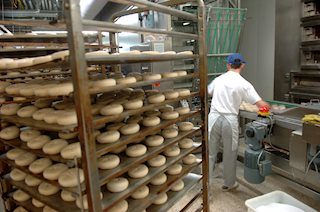Manufacturing recovery to continue into the summer
|
-
Our checklist for the global manufacturing cycle points to further upside in the coming months - but also tentative signs of a peak during H2.
-
A softening in some leading indicators is broadly in line with our expectation of a temporary and mostly inventory-driven upturn rather than a new manufacturing boom. Easing financial conditions continue to provide support, though.
-
The manufacturing recovery underpins commodity prices and provides some lift to goods inflation. However, we don’t expect a new strong inflationary impulse from this channel as it would normally require a stronger manufacturing upturn.
-
We see only limited impact on bond yields as the manufacturing recovery is set to be moderate - and is largely expected by markets. The lift to global manufacturing fits with our view of short-term upside risk to EUR/USD.
As we highlighted in Research Global: manufacturing cycle has turned - more to come, 7 February, the global manufacturing recession in 2023 was coming to an end. Over the past couple of months we have seen further signs of this with PMI manufacturing rising in both US, Europe and China. The upturn has come fairly late compared to signals from some leading indicators, which could be due to some interest rate sensitive sectors, such as construction and energy-intensive activity, has taken a bigger and longer hit this time relative to other manufacturing. That seems to be the case in Germany where energyintensive production has clearly underperformed. But with financial conditions easing, we may finally see some improvement here as well.
Looking ahead, we expect to see further upside in global manufacturing PMIs going into the summer. The signals from leading indicators such as Asian exports, orderinventory balances and financial conditions all suggest that there is still more to the upturn.
However, we also see tentative signs of slowing momentum showing up in the second half of the year. The growth rate in Asian exports has started to taper off and the orderinventory balances have also rolled over suggesting that the lift from the inventory cycle is set to fade on a 3-6 months horizon. Finally, US goods consumption has had a weak start to the new year after a decent run in the second half of 2023. It broadly fits with our expectation that the manufacturing recovery is not the beginning of a new boom but that it will peak at a lower level than normal and probably also have a shorter duration.
Of course, it could turn out that the softer Asian export data lately is just a pause in a further upward trend. That will also depend on how much monetary easing we are likely to get from central banks. If inflation suddenly drops faster again, we could see more easing and thus more support to growth. We could also see European consumers recover stronger.
Information on these pages contains forward-looking statements that involve risks and uncertainties. Markets and instruments profiled on this page are for informational purposes only and should not in any way come across as a recommendation to buy or sell in these assets. You should do your own thorough research before making any investment decisions. FXStreet does not in any way guarantee that this information is free from mistakes, errors, or material misstatements. It also does not guarantee that this information is of a timely nature. Investing in Open Markets involves a great deal of risk, including the loss of all or a portion of your investment, as well as emotional distress. All risks, losses and costs associated with investing, including total loss of principal, are your responsibility. The views and opinions expressed in this article are those of the authors and do not necessarily reflect the official policy or position of FXStreet nor its advertisers.